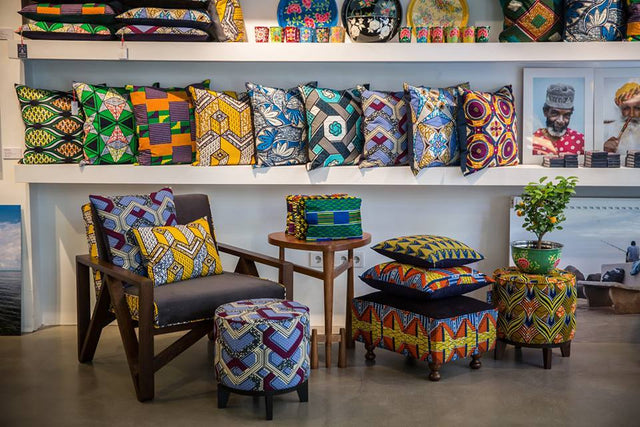Wax and Manufacturing
The Wax also called, the loincloth is easily distinguished by its originality. It is a fabric with vibrant, warm colors and original prints. Made primarily from a white cotton fabric, it is increasingly printed on other materials such as silk, chiffon, spandex and many more. Wax has always been associated with Africa and its clothing culture.
How do we make it?

His homemade process requires several steps. First of all, the printing phase consists of drawing or printing patterns on the still entirely white fabric. Then the phase where we apply wax. Hence its name the "wax cloth". During this stage, the wax is applied all along the patterns drawn on the fabric during the first stage. This process is essential because it will allow the color to be delineated during the coloring phase. It is then that the drawings will take shape.
Then comes the coloring phase. During this step, the fabric that was white will be colored in different colors, depending on the desired project. Depending on the size of the fabric, the drying time will be more or less long. Thereafter the color will be fixed on the fabric thanks to an industrial glue. This glue will then be left to dry for a few minutes.
The next step will be to wash the fabric a first time to get rid of the wax applied during the second step of the process. After a few seconds in warm, soapy water, the previously applied wax will dissolve in the water. From this point we can clearly see the different boundaries created by the wax.
Finally, this will be the last drying step, which consists of letting the fabric air dry. The famous "Wax fabric" takes shape.
Wax in all its forms
The wax fabric keeps its beauty and its particularity in various forms. Indeed, wax can be used for all imaginable things that require fabric. It has been used for very long decades to make traditional African clothing, in special ceremonies or in everyday life. Anxious to discover its cultural richness throughout the world, Africa and its fashion ambassadors have succeeded in exporting and democratizing this fabric with vibrant patterns and colors to the rest of the world. Today, designers around the world are overflowing with ideas to create contemporary and urban cuts. It is also used for the creation of all types of accessories, necklaces, jewelry, shoes, bags and even decoration.
- You also create a unique model in wax >>>>>> here <<<<<<
- Want a scarf in Wax? >>>>>> here <<<<<<




